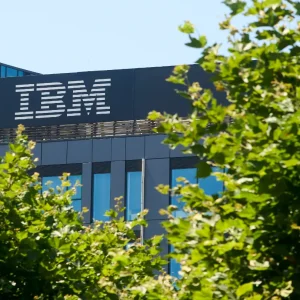
If you produce some of the best known biscuit and snack brands in the UK – chances being very high all readers of CBR will have indulged in consuming such in the past few days, say – then making sure your production systems work to their top capability is a given.
But just as important, of course; the ICT system that complements it has to be a top performer, too, especially the way you store and manipulate SKU and customer data.
The company we’re talking about that’s doing just that is United Biscuits, who has been telling us this week about its use of SAN technology from supplier NetApp and how that’s helping it meet its targets.
Founded in 1948 via the merger of what were two Scottish family businesses, United Biscuits today is the company behind brands including McVitie’s, Jacob’s, Carr’s, McCoy’s, Hula Hoops, and KP.
Now a major snack producer not just in the UK but also France, the Netherlands, Belgium, and Ireland, the company serves consumers around the globe. (It’s an SAP shop on the production end, by the way, at its Liverpool data centre.)
"We wanted to make our IT services work harder," its technical services manager, Steven Summersgill, told CBR. He says that vision included virtualising more of his environment as well as deploying thin provisioning.
United was also looking, he says, for a storage pathway that would support an increasingly virtualised environment and also provide simultaneous backup and instant failover.
In product terms, he’s gone for a central appliance architecture that integrates storage into a virtual environment, with the next step a move to a complete backup/business continuity facility in the shape of a fully mirrored set-up (again, more NetApp) which will be located at a second site (and which he expects to come on stream within the next few months).
In project deliverable terms, for Summersgill, that’s also translating into additional storage capacity that’s immediately available to meet the needs of a desktop virtualisation roll-out across the organisation – as well, thankfully, as reduced costs, increased capacity, and greater functionality and flexibility within the storage service he has to provide the company across the UK and Northern Europe as a whole.
"Rather than carry on down the same old route of adding more drives to the existing system, this project gave us the opportunity to do things better," he believes.
Summersgill’s final choice meant going outside the company’s traditional storage provider of choice; IBM. Why? After all, he admits himself he’s made significant investment in Big Blue kit over the years. But that IBM investment, he had found, was now proving expensive to expand and operate within an increasingly virtualised environment.
That high opex cost in the end combined with that interest in a better disaster recovery solution, promoting him to think outside the (Blue) box.
In fact… in a way, he’s got best of both, as the supplier was able to integrate the existing SAN stuff from IBM into the new virtual infrastructure. As it stands, he says about 50% of the data and most key applications have been relocated onto the new system, with the remainder probably going over when the second site is operational and replication has been configured. (In total, the combined new and legacy storage array adds up to about 35 Terabytes of storage space.)
Even before that final finish line gets crossed, he’s seeing big improvements in performance via an early benefit – deduplication. "That’s really delivered savings in terms of space already," he says.
So – increased capacity, the ability to meet that VDI project deadline, preservation of existing investment and the way forward to a new DR answer. Seems like this move has provided some healthy ICT ‘nutrition’ to Summersgill’s company; but if there was one word to sum up the new state of play and why United’s in a better place, he has just one word: "Flexibility".
Got to be worth a savoury crunch or two?






